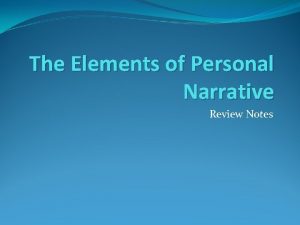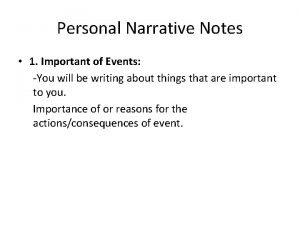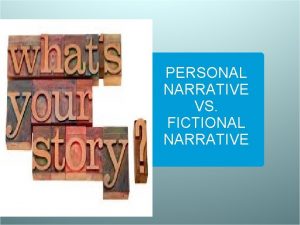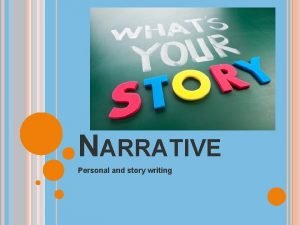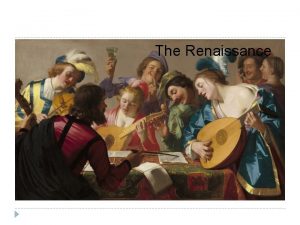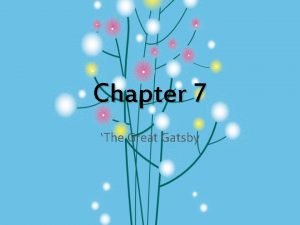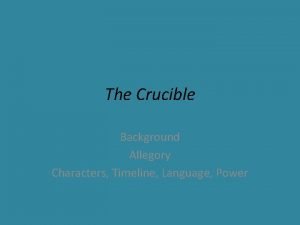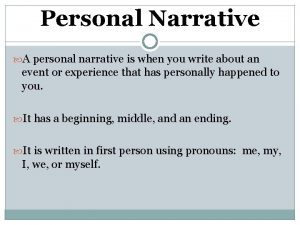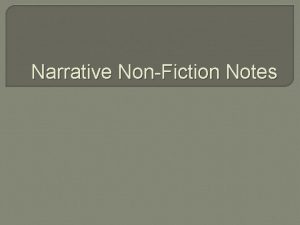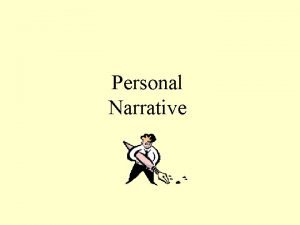Personal Narrative Notes 1 Important of Events You








- Slides: 8

Personal Narrative Notes • 1. Important of Events: -You will be writing about things that are important to you. Importance of or reasons for the actions/consequences of event.

Personal Narrative Notes • 2. First Person Story – A true story you tell about yourself. – First person POV (“I, ” “me, ” “myself”) – Story is important to the writer

Personal Narrative Notes • 3. Focus/Development of Ideas – Message is easily to understand. – Topic is narrowed and specific. – Use descriptions to say things in a unique/memorable way

Personal Narrative Notes • 4. Sequence of Events – Retell the story in ___________ order (cause/effect, chronological, problem/solution) – Chronological- in order from beginning to end – Inviting introduction & effective conclusion – Transition words : first, then, next, finally, after phrases link sentences & paragraphs

Personal Narrative Notes • 5. Sensory Details – Show, don’t tell. – Think of what each of the senses is experiencing in that moment. – Use vivid images to help reader experience setting, characters, action as YOU did. Hear Smell Taste Touch See

Personal Narrative Notes • 6. Dialogue – Reveal details about characters through what they say to each other. – Add details in dialogue tags you use. – Dialogue should add to plot.

Annotation & Analysis of “The Bike” by Gary Soto • • • 1. As you read, identify what specific memory Gary is writing about. 2. Underline sensory details. 3. Highlight & label figurative language. 4. Identify how it is organized. Chronological order? Problem/solution? How are paragraphs organized? 5. Make a list of who is involved in this story. 6. Explain what the dialogue does. What does it show about the people involved? 7. Box important emotions the author has. 8. Draw a heart next to the part of the story that holds the significance to the author. What is the significance? (Think about the lesson he learned. ) 9. Finally, explain how the conclusion is so effective. What is it communicating to the reader?

SSR • 10 minutes
